U.S. Troops In Iraq Leaving Saddam Palaces
From: http://www.huffingtonpost.com/

BAGHDAD — Available soon: nine palaces in lakeside complex frequented by visiting kings and dictators, beautiful molded ceilings and light fixtures, many bidets, Saddam Hussein mural and former prison cell. As is, with Tomahawk missile damage. Contact: U.S. Army.
Thus might read a real estate ad for the Victory Base Complex, one of the many properties the U.S. military is vacating as the Dec. 31 deadline for its withdrawal from Iraq approaches. It will leave behind probably some of the most elaborate, some would say tacky, office spaces ever used by American soldiers, sailors or Marines.
The U.S. military has been headquartered in the complex near Baghdad International Airport almost since GIs reached Baghdad in 2003. Countless U.S. dignitaries have passed through.
It is an odd place to work, surrounded by so much Saddam history and grandiosity.
By the time the dictator was toppled, he had built about 75 palaces and VIP complexes nationwide. That is according to the then U.S. military historian's report on the Victory Base Complex written last year.
Touring the complex is a bit like touring Saddam's mind.
There is the Victory over Iran palace, commemorating the 1980-1988 war he started that ended in stalemate and half a million dead. And the Victory over America palace commemorating the 1991 Gulf War in which a U.S.-led coalition drove Saddam's invading forces out of Kuwait.
"Any war that Saddam survived was a victory," said Col. Les Melnyk, the former U.S. military historian in Iraq.
Now the Iraqi government must figure out what to do with all this square footage.
It already is turning a palace complex in the southern city of Basra into a museum. A palace near the ruins of Babylon may become a hotel.
Bahaa Mayah heads an Iraqi committee that decides on the fate of the palaces and recently toured the Victory complex.
He thought it would make a good presidential complex, being near the airport.
"When a foreign president or prime minister visits Iraq, we close all the streets, and a lot of security measures are taken and so it really disturbs the traffic inside Baghdad," he said. "So the best place is near the airport where the president can receive his guests without any security burden."
Before Saddam's building spree, it was a country club for Baghdad's elite, and still sports the old signs advertising parking spaces and casino hours.
Saddam had his initials etched into the walls, columns and ceilings of almost every building. One of the last known murals of Saddam decorates the former barracks of his elite Republican Guard.
There is the jail cell he occupied after his capture by U.S. forces, the room where he was interrogated, the spot where he gardened while awaiting trial and the dolly to which he was strapped when he was taken out of the building.
Government spokesman Ali al-Dabbagh said the jail cell will become a museum.
A prime property at the Victory complex is Al Faw palace, whose construction became Saddam's personal architectural hobby. He made more than 400 changes to the plans, according to the history of the complex.
"It has gorgeous ceilings and chandeliers, but we use it like a regular office building albeit with a lot more marble," Melnyk said.
Saddam's most dramatic – and, as it turns out, most damaging – alteration grew from paranoia. Flying over the building, he thought he saw a cross woven into the design and suspected the Yugoslav architects did it on purpose.
"He assumed, being the paranoid man ... that he was, that they were trying to insert a Christian symbol into his country. So he made the decision on the spot to double the size of the palace," Melnyk said.
The result of the hasty remake is that the back half of the palace is unstable, Melnyk said. Cracks are showing, chunks of the walls are falling off, and the palace may cease to be inhabitable. Meanwhile, the staircases are chipped and nicked after years of U.S. troops' weapons accidentally banging into them.
The troops do not mind climbing three floors just to use the massive bathroom – 12 sinks in one room alone. The bidets are used to store toilet paper.
The U.S. military has made many improvements to the palaces it has occupied – smoke detectors, new wiring, upgraded plumbing. Interiors have become cubicled office space and machines clean the floors at Al Faw.
The security agreement governing the withdrawal, however, does not require the U.S. to fix any damage it has caused to these buildings.
It does not help that the palaces were not always built very well. In the back of Al Faw, the paint looks haphazardly applied to the plaster ceiling moldings, the chandeliers in the hallway do not line up and the floor tiles are uneven.
Saddam was thinking "Versailles," but the materials he bought were more half-price sale at Home Depot. At Al Faw the banisters are gypsum, not marble. The Arabic script on the walls looks like gold but it is really brass.
The largest building in the complex is the Victory over America palace, its ceiling holed by an American bomb, its walls featuring graffiti left by American troops. It is a cavernous building with a walk-in fireplace, sweeping staircases and nooks high above the massive ballroom where Saddam could spy on his guests.
Melnyk did not know why the building was bombed. But he joked that its name probably did not help.
At water's edge is a building that the U.S. targeted with a Tomahawk missile, believing Saddam was inside. The roof collapsed, killing some 200 officials of the ruling Baath Party who were watching a movie. It was later used by the U.S. to train sniffer dogs in the hunt for bodies in the wreckage, Melnyk said.
In another part of the building, he said, U.S. forensics teams identified matter scraped from the side of an empty pool as brain parts, suggesting someone was executed there just before the invasion.
Now Iraqis must decide how to place Saddam's grand designs in their historical context – to raze them as bitter memories, or recycle them for a future free of American occupation.
Mayah, the committee head, notes that most of them were built in the 1990s, when Iraq was under international sanctions and the public was suffering from sweeping shortages.
"They did not have money to feed themselves, while the president was building palaces," he said. The palaces "should stay and remind Iraqis of the period they were built in."
(This version CORRECTS Corrects status of historian; updates photos. Also sent in advance. Multimedia: An interactive showing the palaces of Saddam Hussein that the U.S. Military will soon return to the Iraqi government will be available from noon EDT Sunday in the _international/saddam-palaces folder.)



 [Image: Ruined swimming pool at
[Image: Ruined swimming pool at  [Image: Saddam's heads, taken from the roof of the Republican Guard Palace, now located at Al-Salam Palace, Forward Operating Base Prosperity, Baghdad, Iraq (2009); photo by
[Image: Saddam's heads, taken from the roof of the Republican Guard Palace, now located at Al-Salam Palace, Forward Operating Base Prosperity, Baghdad, Iraq (2009); photo by 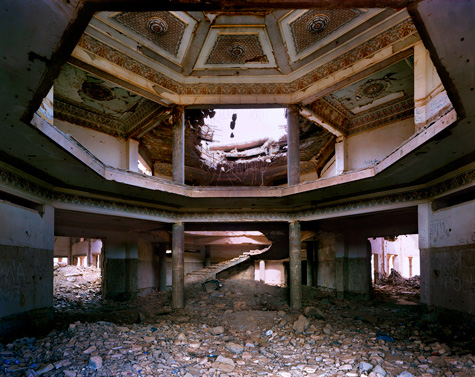 [Image: JDAM bomb damage within Saddam's Palace interior, Jebel Makhoul, Iraq (2009); photo by
[Image: JDAM bomb damage within Saddam's Palace interior, Jebel Makhoul, Iraq (2009); photo by 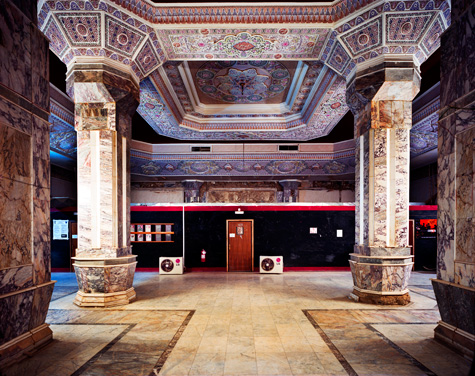 [Image: U.S.-built partition and air-conditioning units within Al-Salam Palace, Forward Operating Base Prosperity, Baghdad, Iraq (2009); photo by
[Image: U.S.-built partition and air-conditioning units within Al-Salam Palace, Forward Operating Base Prosperity, Baghdad, Iraq (2009); photo by 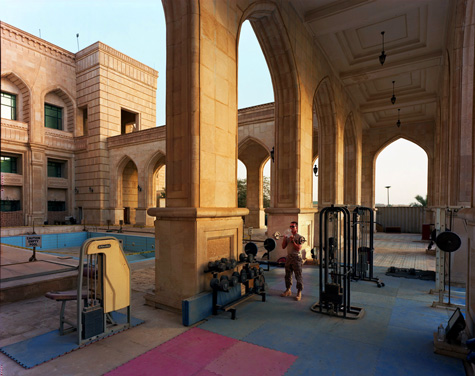 [Image: Outdoor gym, Al-Faw Palace, Camp Victory, Baghdad, Iraq (2009); photo by
[Image: Outdoor gym, Al-Faw Palace, Camp Victory, Baghdad, Iraq (2009); photo by  [Image: U.S. military telephone kiosks built within Birthday Palace interior, Tikrit, Iraq (2009); photo by
[Image: U.S. military telephone kiosks built within Birthday Palace interior, Tikrit, Iraq (2009); photo by 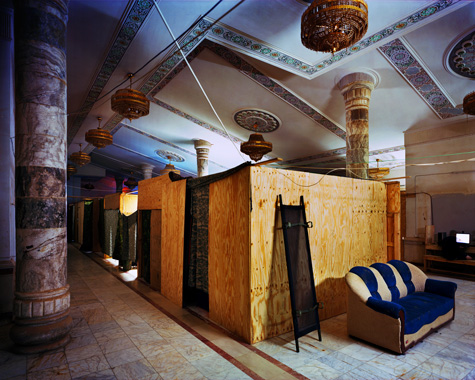
 [Images: American dormitories built within Saddam's Birthday Palace, Tikrit, Iraq (2009); photos by
[Images: American dormitories built within Saddam's Birthday Palace, Tikrit, Iraq (2009); photos by 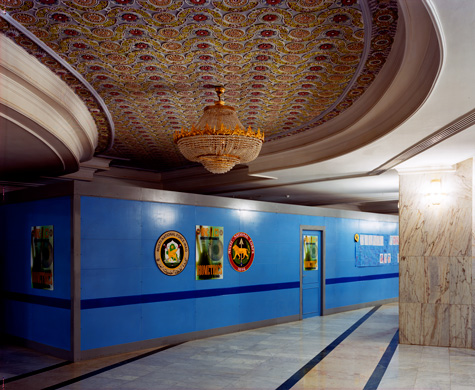 [Image: Provisional office wall partitions within Al-Faw Palace, Camp Victory, Baghdad, Iraq (2009); photo by
[Image: Provisional office wall partitions within Al-Faw Palace, Camp Victory, Baghdad, Iraq (2009); photo by  [Image: Fallen tiles and chandeliers, Al Faw Palace, Camp Victory, Baghdad, Iraq (2009); photo by
[Image: Fallen tiles and chandeliers, Al Faw Palace, Camp Victory, Baghdad, Iraq (2009); photo by  [Image: "Thank you for your service" banner, Al-Faw Palace interior, Camp Victory, Iraq (2009); photo by
[Image: "Thank you for your service" banner, Al-Faw Palace interior, Camp Victory, Iraq (2009); photo by 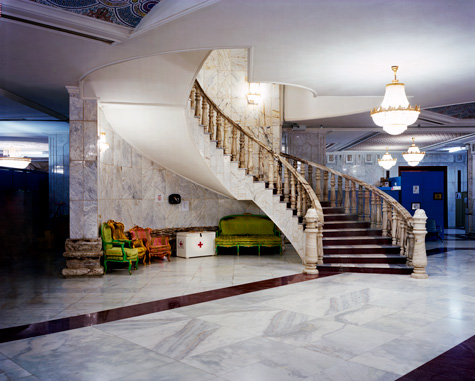 [Image: Stairway, Al-Faw Palace, Camp Victory, Baghdad, Iraq (2009); photo by
[Image: Stairway, Al-Faw Palace, Camp Victory, Baghdad, Iraq (2009); photo by  [Image: Chandelier, Al-Faw Palace, Camp Victory, Baghdad, Iraq (2009); photo by
[Image: Chandelier, Al-Faw Palace, Camp Victory, Baghdad, Iraq (2009); photo by 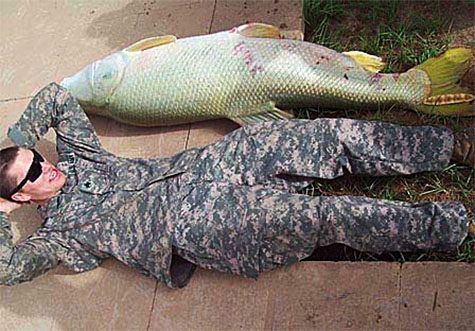 [Image: Tigris Salmon caught at Camp Victory Base, measuring 5 feet 10.5 inches and weighing 105 lbs. Image courtesy of the
[Image: Tigris Salmon caught at Camp Victory Base, measuring 5 feet 10.5 inches and weighing 105 lbs. Image courtesy of the  [Image: A game of basketball, Birthday Palace, Tikrit, Iraq (2009); photo by
[Image: A game of basketball, Birthday Palace, Tikrit, Iraq (2009); photo by  [Image: Detail of U.S. soldier's living quarters, Birthday Palace interior, Tikrit, Iraq (2009); photo by
[Image: Detail of U.S. soldier's living quarters, Birthday Palace interior, Tikrit, Iraq (2009); photo by  [Image: Birthday Palace, Tikrit, Iraq (2009); photo by
[Image: Birthday Palace, Tikrit, Iraq (2009); photo by 






REBECCA SANTANA